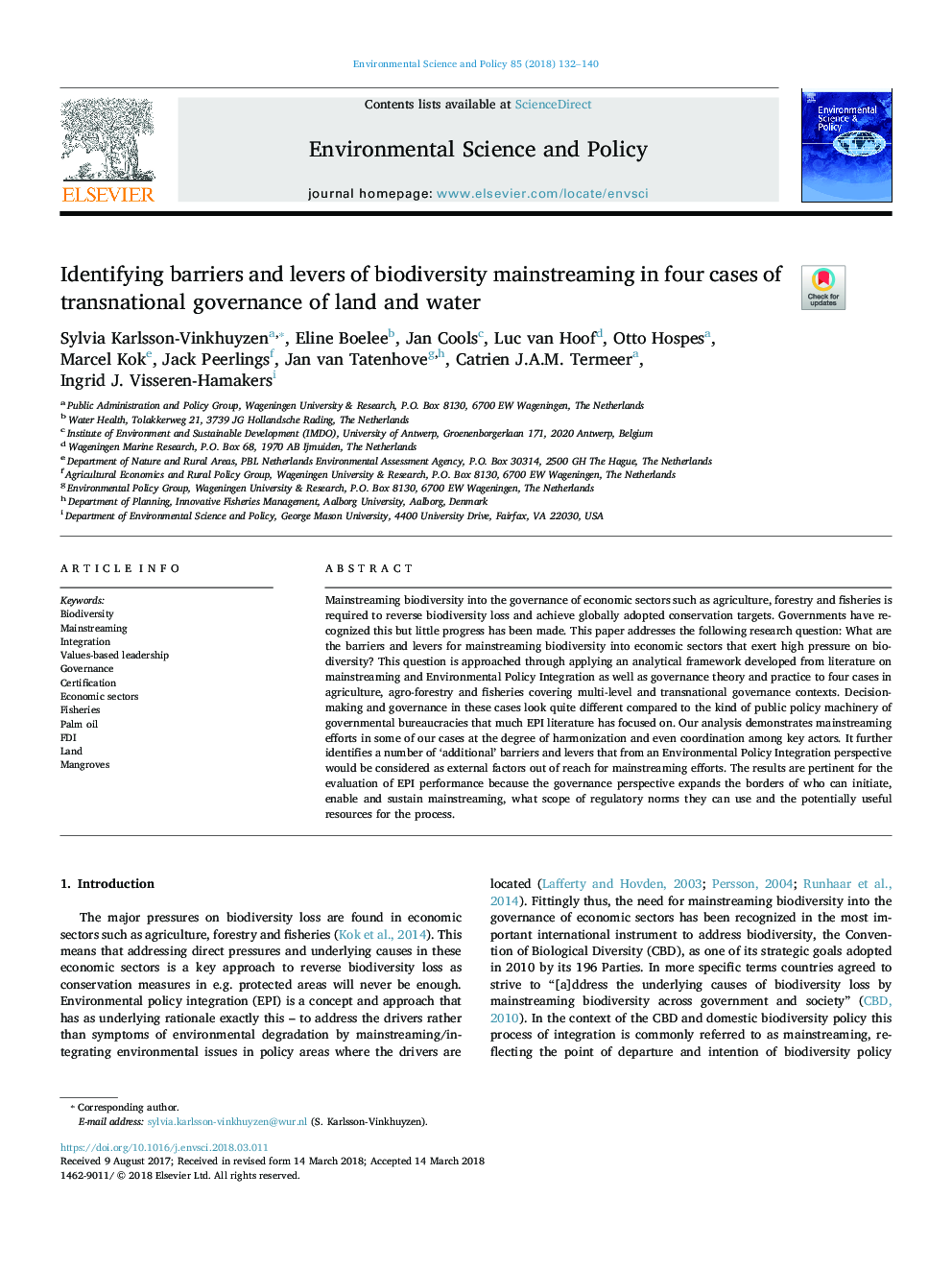| Article ID | Journal | Published Year | Pages | File Type |
|---|---|---|---|---|
| 7465897 | Environmental Science & Policy | 2018 | 9 Pages |
Abstract
Mainstreaming biodiversity into the governance of economic sectors such as agriculture, forestry and fisheries is required to reverse biodiversity loss and achieve globally adopted conservation targets. Governments have recognized this but little progress has been made. This paper addresses the following research question: What are the barriers and levers for mainstreaming biodiversity into economic sectors that exert high pressure on biodiversity? This question is approached through applying an analytical framework developed from literature on mainstreaming and Environmental Policy Integration as well as governance theory and practice to four cases in agriculture, agro-forestry and fisheries covering multi-level and transnational governance contexts. Decision-making and governance in these cases look quite different compared to the kind of public policy machinery of governmental bureaucracies that much EPI literature has focused on. Our analysis demonstrates mainstreaming efforts in some of our cases at the degree of harmonization and even coordination among key actors. It further identifies a number of 'additional' barriers and levers that from an Environmental Policy Integration perspective would be considered as external factors out of reach for mainstreaming efforts. The results are pertinent for the evaluation of EPI performance because the governance perspective expands the borders of who can initiate, enable and sustain mainstreaming, what scope of regulatory norms they can use and the potentially useful resources for the process.
Keywords
Related Topics
Physical Sciences and Engineering
Energy
Renewable Energy, Sustainability and the Environment
Authors
Sylvia Karlsson-Vinkhuyzen, Eline Boelee, Jan Cools, Luc van Hoof, Otto Hospes, Marcel Kok, Jack Peerlings, Jan van Tatenhove, Catrien J.A.M. Termeer, Ingrid J. Visseren-Hamakers,
